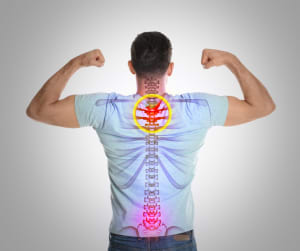
Chiropractic care, cupping, and dry needling are powerful tools to realign, release, and reset your body. But what happens after that reset? If you want long-term results—less pain, better posture, and enhanced performance—the next essential step is building strength.
Active recovery helps bridge the gap between treatment and movement, but to lock in those gains, you need to go one step further: functional strength training.
Why Strength Training Matters After Chiropractic Work
Every adjustment or soft tissue release creates an opportunity. Joints move better, muscles relax, and your nervous system gets the green light to reset. But unless you reinforce these changes with controlled, purposeful movement, your body may revert to its old habits.
Here’s why strength work is key:
Muscles hold joints in alignment: Adjustments make space, but strength training keeps things stable.
Stronger tissues resist injury: Resilient muscles and tendons are less likely to get strained or inflamed.
Strength builds control: With proper training, you gain not just force—but also coordination and movement precision.
Common Weak Links After Pain or Injury
Clients often arrive at a chiropractor’s office with compensation patterns—where the body has learned to "cheat" around weakness or pain. Once we clear restrictions, we can rebuild the original pattern.
Some of the most common areas that need strength-focused rehab include:
Glutes – underactive in many low-back and knee issues.
Core musculature – the stabilizing base for nearly every movement.
Rotator cuff and scapular stabilizers – key for shoulder integrity.
Deep neck flexors – crucial for posture and cervical spine health.
When to Start Strength Work
Many clients ask: “How soon after treatment can I train again?”
The answer depends on your recovery status, but in general:
Post-cupping or dry needling: Wait 24–48 hours before intense training; light movement is usually encouraged.
After spinal adjustments: Begin with bodyweight movements and progress based on feedback from your provider.
Pain-free? Start now: If you’re cleared for movement, begin with low-load, controlled strength exercises.
Foundational Movements for Resilient Joints and Better Posture
Strength training doesn’t mean chasing PRs on the barbell. It means training in ways that restore balance, enhance stability, and support functional movement.
Consider integrating:
Deadlifts & hip hinges – for glute and core activation
Split squats & lunges – to improve single-leg stability
Loaded carries (farmer’s, suitcase, overhead) – to build core and grip
Rows & face pulls – to support shoulder health
Anti-rotation core work – like Pallof presses and bird dogs
These movements mimic real-world demands, improve motor control, and translate directly to your daily life or athletic goals.
From Pain-Free to Performance-Ready
At the heart of this strategy is the idea of ownership. Chiropractic care gives you a head start—but building strength puts you in the driver’s seat of your wellness journey. The more stable and strong your body becomes, the more sustainable your results.
Curious where to begin?
Ask your chiropractor or movement coach for an individualized strength roadmap. Whether you’re getting out of pain or training for your next event, we can help you move stronger, recover smarter, and live better.

